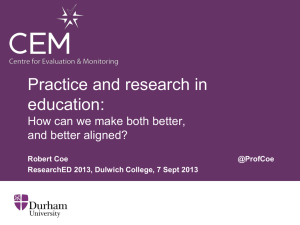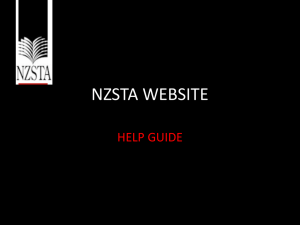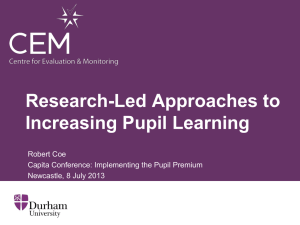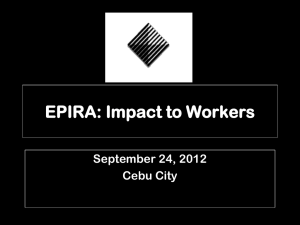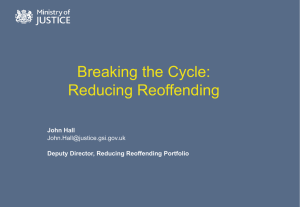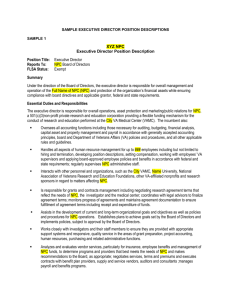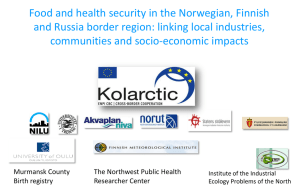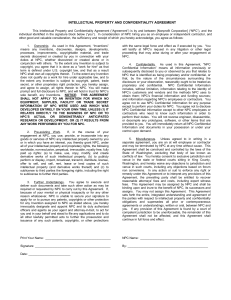Anna Kazimirski, New Philanthropy Capital
advertisement
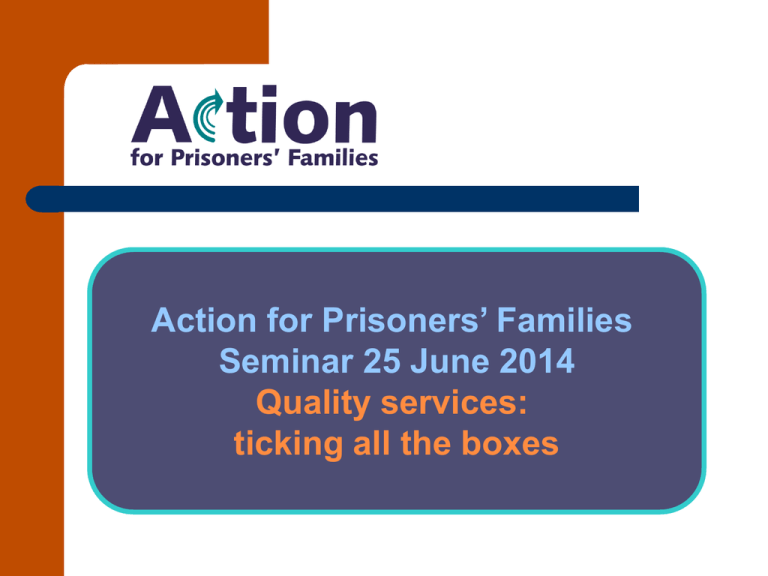
Action for Prisoners’ Families Seminar 25 June 2014 Quality services: ticking all the boxes Evaluation and family relationship measures Anna Kazimirski EVALUATION AND FAMILY RELATIONSHIP MEASURES ANNE KAZIMIRSKI, NPC v Action for Prisoners’ Families – 25th June 2014 TRANSFORMING THE UK CHARITY SECTOR Charity Increasing the impact of charities eg, impact-focused theories of change Funder Increasing the impact of funders eg, effective commissioning Sector NPC works at the nexus between charities and funders Consultancy Think tank Strengthening the partnership Eg, collaboration towards shared goals 4 WHY MEASURING IMPACT IS IMPORTANT Raises profile Motivates staff The Brandon Centre provides Helps secure Influences the counselling funding and psychotherapy to debate on young people between the ages of 12 “what works” and 21 Improved services Taken from: Rickey, B, Lumley, T and Ni Ogain, E . (2011) A Journey to Greater Impact New Philanthropy Capital. 5 COMPONENTS OF NPC’S APPROACH TO MEASURING SOCIAL IMPACT Effective measurement framework developed Map your theory of change Prioritise what you measure Choose your level of evidence Select your sources and tools Strategic vision Leadership Case for impact measurement 6 THEORY OF CHANGE Links activities intermediate outcomes final outcomes clarifies what the activities aim to achieve and how provides a structure for identifying what can be measured provides the case for why achieving intermediate outcomes is important A conceptual map of how activities lead to outcomes 7 EXAMPLE THEORY OF CHANGE Offenders (and families) feel empowered to take responsibility and maintain gains Strengthened family ties & relationships Reintegration into (non criminal) social & family groups Family therapy Levels of conflict within families reduced Observable reduction in problem behaviours during process Contribution to reduced reoffending 8 OFFENDERS’ FAMILY RELATIONSHIPS • Commissioned by NOMS to develop toolkit to measure intermediate outcomes of work to improve family & peer relationships of offenders • Project going through peer review, to be published later this year • Parallel project: RAND Europe, with ARCS (UK) and University of Glamorgan, focusing on arts and mentoring work with offenders 9 10 PROJECT PROCESS Evidence review – identifying outcomes and toolkits Consultation with providers & commissioners to select outcomes to focus on Development and piloting of toolkit Consultation with providers & commissioners to inform guidance Analysis and reporting DEVELOPMENT OF RELATIONSHIPS TOOLKIT • Desistance theory: • • • Link between creation/ investment in family relationships / reduction in peer pressure with reduced offending Consultation: • Outcomes differed depending on the type of intervention & beneficiary • Needed to reach a balance between being prescriptive and allowing for flexibility We researched existing scales and evaluations in each outcome area and prioritised: • good validity and reliability; recently developed; brevity. Toolkit: 25 standardised scales, to be used in paper questionnaires for offenders to complete. For each outcome area: short general scales & longer specialised scales. 12 TOOLKIT STRUCTURE Child relationships Partner relationships + + Peer relationships Wider family relationships + Reduced reoffending + + + RAND personal development outcomes Parenting 13 OUTCOME AREAS Partner relationships Increased satisfaction with partner relationship, reduced conflict and improved commitment Child relationships Quality of relationships with children, children’s well-being and behaviour Wider family relationships Family functioning, resilience, conflict and communication, satisfaction with relationships in the family and quality of relationships Parenting Improved satisfaction with the parent-child relationship and parenting skills Peer relationships Satisfaction with peer relationships and reduction of negative peer relationships 14 CHARACTERISTICS OF TOOLKIT • The questions can be used as monitoring or as part of an evaluation with a ‘before and after’ (pre/post) research design, with a comparison group where possible “Intervention” group Before measure Programme / service After measure “Comparison” group Before measure After measure 15 RESOURCES http://www.thinknpc.org/ NPC’s Wellbeing measure: http://www.well-beingmeasure.com NPC’s papers on How to approach evaluation: http://www.thinknpc.org/publications/npcs-four-pillar-approach/ Theory of Change: http://www.thinknpc.org/publications/theory-of-change/ How to communicate your results: http://www.thinknpc.org/publications/talking-about-results/ Profile of six charities who radically improved their approach to impact measurement: http://www.thinknpc.org/publications/a-journey-to-greater-impact/ http://inspiringimpact.org/ Code of Good Impact Practice Online impact marketplace anne.kazimirski@thinknpc.org 020 7620 4855 Twitter: @npcthinks, @AnneKazimirski 16 Action for Prisoners’ Families Seminar 25 June 2014 Quality services: ticking all the boxes www.prisonersfamilies.org.uk @Prisonerfamily

